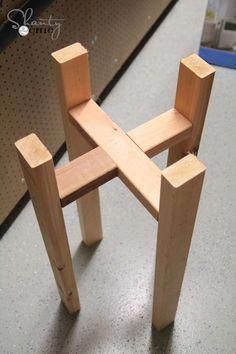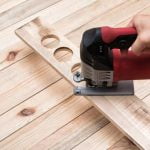Are you struggling with the challenge of how to get dogs to stop chewing woodwork? Dog chewing can be a frustrating problem for many pet owners, especially when it involves destroying woodwork in your home. In this article, we will explore the destructive behavior of dog chewing and provide effective training techniques to prevent woodwork chewing.
Dogs have a natural instinct to chew, and while this behavior is normal, it can become destructive when directed towards woodwork in your home. Understanding the root cause of why dogs chew woodwork is crucial in addressing and correcting this behavior. We will delve into the reasons behind this behavior and explore the dangers of allowing your dog to continue this destructive habit.
In addition to understanding the root cause and dangers of dog chewing woodwork, we will also discuss effective training techniques to prevent this behavior. From providing alternate chewing options for your dog to utilizing bitter-tasting deterrents, there are practical steps you can take to address and correct your dog’s woodwork-chewing habits.
By establishing consistency and boundaries, as well as knowing when to seek professional help, you can enjoy a woodwork-chewing-free home with your beloved canine companion.
Understanding the Root Cause
Dogs, like humans, have their own reasons for indulging in certain behaviors. When it comes to chewing on woodwork, there are a number of underlying reasons why dogs engage in this destructive behavior. Understanding these root causes is crucial in effectively addressing and preventing woodwork chewing in your beloved pet.
Some common reasons why dogs chew woodwork include:
1. Teething: Puppies, especially, may chew on woodwork as a way to soothe their gums during the teething process. Providing appropriate teething toys can help redirect this behavior (see “Providing Alternate Chewing Options for Your Dog” below).
2. Boredom or Anxiety: Dogs that are left alone for long periods of time or are under-stimulated may turn to woodwork chewing as a way to alleviate boredom or anxiety.
3. Lack of Exercise: A dog with excess energy and not enough physical activity may resort to chewing as a way to release pent-up energy.
4. Natural Instincts: Some breeds, especially those with strong hunting instincts, may be genetically predisposed to enjoy the act of chewing.
5. Dental Issues: In some cases, dogs may chew on woodwork due to dental problems such as gum disease or tooth pain.
Understanding the root cause of your dog’s woodwork-chewing habit is the first step towards effectively addressing and preventing this behavior. By identifying the underlying reason behind your dog’s actions, you can tailor your approach and training techniques accordingly.
The Dangers of Dog Chewing Woodwork
Dog chewing woodwork can lead to a variety of dangers for both your pet and your home. Not only can it result in costly damage to your furniture, trim, and doors, but it can also pose serious health risks to your dog. Splinters from the woodwork can cause injury to your pet’s mouth, throat, and digestive system if ingested.
In some cases, chewing on treated or painted woodwork can even expose your dog to toxic chemicals. It’s important to understand the potential dangers associated with this behavior in order to address it effectively.
Here are some of the potential dangers of dog chewing woodwork:
To prevent these dangers and protect both your dog and your home, it is crucial that you address the issue of woodwork chewing proactively. By implementing effective training techniques and providing alternative chewing options for your dog, you can create a safe environment while curbing this destructive behavior.
Effective strategies for preventing dog chewing woodwork include:
1. Positive reinforcement training methods: Utilize rewards and praise when your dog chooses appropriate chew toys over woodwork.
2. Providing durable chew toys: Offer a variety of toys that are specifically designed for heavy chewers.
3. Using bitter-tasting deterrents: Apply deterrent sprays or solutions to discourage wood-chewing behavior.
4. Consistency in boundaries: Establish clear boundaries and consistently enforce them in order to modify your dog’s behavior.
By using these strategies and being consistent in their implementation, you can help ensure that both your pet and your home remain safe from the dangers associated with dog chewing woodwork.
Effective Training Techniques to Prevent Woodwork Chewing
Positive Reinforcement Training
One of the most effective ways to stop your dog from chewing on woodwork is through positive reinforcement training. This involves rewarding your dog for good behavior, such as using a chew toy instead of biting on furniture. When you catch your dog in the act of not chewing on woodwork, immediately praise and reward them with treats or toys. This will help them understand that they are doing something right and encourage them to continue this behavior.
Redirecting Behavior
Another important training technique is redirecting your dog’s behavior when you catch them chewing on woodwork. Instead of scolding or punishing them, calmly interrupt their behavior and provide them with an appropriate chew toy. By consistently redirecting their attention to a more suitable object, such as a rubber bone or rope toy, you can help your dog learn what they are allowed to chew on.
Consistency in Correction
Consistency is key when it comes to training your dog to stop chewing woodwork. It’s important to correct their behavior every time you catch them in the act, as inconsistent correction can be confusing for your pet. Additionally, make sure everyone in the household follows the same rules and provides consistent redirection and positive reinforcement. This will help reinforce the message that chewing on woodwork is not acceptable behavior.
By implementing these effective training techniques, you can effectively prevent your dog from chewing on woodwork and enjoy a peaceful coexistence with your furry friend in a well-maintained home. Remember that patience and consistency are essential when it comes to modifying your dog’s behavior, so be persistent and understanding throughout the training process.
Providing Alternate Chewing Options for Your Dog
Dogs have a natural instinct to chew, and providing them with appropriate chewing options is essential in preventing them from indulging in destructive behavior such as chewing woodwork. One effective way to redirect their chewing habits is by offering alternate chewing options that are both safe and engaging for your furry friend. When selecting chew toys or bones for your dog, it’s important to choose ones that are durable and suitable for their size and breed.
There are various types of chew toys available in the market, ranging from rubber toys to nylon bones, and even natural chews such as bully sticks or rawhide. It’s important to observe your dog’s chewing habits and preferences to determine the most suitable options for them. Interactive toys that dispense treats or ones that can be filled with food can also help keep dogs mentally stimulated and focused on their designated chewing items.
In addition to providing chew toys, incorporating daily playtime and physical exercise into your dog’s routine can help alleviate boredom and reduce their urge to chew on woodwork. Taking your dog for regular walks, engaging in interactive games, or enrolling them in obedience training classes are all effective ways to mentally stimulate and tire out your pup, ultimately reducing the likelihood of woodwork-chewing behavior.
By providing ample physical and mental stimulation along with appropriate chew toys, you can steer your dog away from destructive chewing habits while promoting positive behavior.
Utilizing Bitter-Tasting Deterrents
When it comes to getting dogs to stop chewing woodwork, one effective technique is to utilize bitter-tasting deterrents. Bitter sprays and gels are designed to make woodwork and other items unappealing and unpalatable for dogs, ultimately discouraging them from chewing on these surfaces. These products are safe for dogs and can be easily applied to different areas around the house.
To use bitter-tasting deterrents effectively, it’s important to thoroughly clean the woodwork before applying the product. This will ensure that the deterrent adheres properly and lasts longer. Once the surface is clean and dry, simply follow the instructions on the product packaging to apply the bitter-tasting solution. It’s essential to reapply the deterrent as needed, especially after cleaning or if it gets washed away due to factors like rain or humidity.
In addition to applying bitter-tasting deterrents directly onto woodwork, it’s also beneficial to provide alternative chew toys for your dog. By redirecting their chewing behavior towards appropriate items, such as durable rubber toys or nylon bones, you can further discourage them from targeting woodwork in your home. Remember that consistency is key when using these deterrents, so be patient and persistent in your efforts to prevent wood-chewing behavior in your dog.
Consistency Is Key
Understanding the importance of consistency when it comes to training your dog to stop chewing woodwork is crucial. Dogs thrive on routine, so it is essential to consistently enforce rules and boundaries to effectively address their chewing behavior. This means all members of the household must be on board with the training plan and consistently reinforce the desired behavior.
One effective way to establish and maintain boundaries is by using positive reinforcement. When your dog chooses an appropriate chewing toy instead of woodwork, be sure to reward them with praise, treats, or playtime. This positive feedback will help reinforce the idea that chewing on the designated items is more rewarding than going after the woodwork.
Consistency also involves closely monitoring your dog’s behavior and providing correction when necessary. If you catch your dog in the act of chewing on woodwork, firmly say “no” and redirect their attention to an approved chew toy. By consistently redirecting their behavior and reinforcing the appropriate actions, your dog will learn what is acceptable and what is not.
| Consistency Techniques | Benefits |
|---|---|
| Positive reinforcement | Reinforces desired behavior |
| Corrective redirection | Teaches dogs what is acceptable |
Remember that consistency takes time and patience. While it may be challenging at first, maintaining consistent boundaries will ultimately lead to success in curbing your dog’s woodwork-chewing habit.
Seeking Professional Help
Recognizing the Need for Professional Help
If your efforts to stop your dog from chewing on woodwork have been unsuccessful despite consistent training and deterrent methods, it may be time to seek professional help. Signs that indicate the need for professional intervention include persistent destructive behavior, extreme anxiety or fears that lead to chewing, or aggression when attempting to redirect the behavior. Consulting a dog trainer or behaviorist can provide you with expert guidance and tailored strategies to address your dog’s specific needs.
Choosing the Right Professional
When considering consulting a professional for your dog’s woodwork-chewing habit, it’s important to choose a reputable and qualified individual. Look for certified dog trainers or animal behaviorists with experience in dealing with destructive behaviors. Additionally, seek recommendations from other pet owners or veterinarians in your area. A qualified professional will assess your dog’s behavior comprehensively and create a training plan that addresses the underlying reasons for the woodwork chewing.
The Benefits of Seeking Professional Help
Working with a skilled dog trainer or behaviorist can provide you with valuable insights into why your dog is exhibiting this destructive behavior. They can also offer customized training techniques and tips that specifically target the root cause of the chewing.
Professional help is especially beneficial when dealing with complex behavioral issues or underlying psychological factors contributing to the problem. With their expertise, you’ll be better equipped to effectively address the woodwork-chewing habit and create a harmonious living environment for both you and your canine companion.
Conclusion
In conclusion, it is essential to address the issue of dogs chewing woodwork as it can lead to costly damage and pose risks to their health. By understanding the root cause of this behavior and utilizing effective training techniques, pet owners can successfully prevent their dogs from engaging in destructive chewing habits. Providing alternate chewing options and using bitter-tasting deterrents can also help curb this behavior.
Consistency is key in establishing and maintaining boundaries with your dog when it comes to preventing woodwork chewing. By setting clear expectations and enforcing them consistently, you can communicate to your furry friend that this behavior is not acceptable. Seeking professional help from a dog trainer or behaviorist may be necessary for more challenging cases of woodwork chewing, ensuring that you receive expert guidance in addressing this issue.
By implementing these strategies and techniques, pet owners can enjoy a woodwork-chewing-free home with their beloved canine companions. With patience, dedication, and the right approach, it is possible to modify your dog’s behavior and foster a harmonious living environment for both you and your four-legged friend.
Frequently Asked Questions
How Do I Get My Dog to Stop Chewing Wood Trim?
To get your dog to stop chewing wood trim, it’s important to provide alternative chew toys and outlets for their chewing behavior. Make sure your dog gets plenty of exercise and mental stimulation to prevent boredom.
Additionally, using deterrent sprays on the wood trim and providing positive reinforcement when they choose not to chew on it can also be effective in stopping this behavior.
What Can I Spray on Wood to Stop Dog Chewing?
One option is to spray a bitter apple or bitter cherry spray on the wood trim to deter your dog from chewing it. These types of sprays have a strong taste that dogs typically find unpleasant, discouraging them from continuing to chew on the wood. It’s important to reapply the spray regularly, especially after cleaning or if it rains.
What Can I Put on My Wood Furniture So My Dog Doesn T Chew It?
You can put a commercial dog deterrent spray or natural deterrents such as citrus or cayenne pepper on your wood furniture to prevent your dog from chewing it. Another option is using double-sided tape or aluminum foil on the areas of the furniture that your dog tends to chew, as most dogs find these textures unpleasant on their teeth and will avoid them.
Providing appropriate chew toys and teaching your dog “leave it” and “drop it” commands can also help redirect their attention away from the wood furniture.

Hi everyone! I’m a woodworker and blogger, and this is my woodworking blog. In my blog, I share tips and tricks for woodworkers of all skill levels, as well as project ideas that you can try yourself.





